Update: St. Luke’s to Move Idaho’s Oldest Giant Sequoia Tree This Week
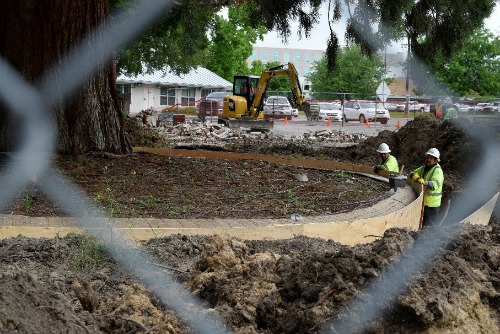
The work to preserve and relocate Idaho’s largest Giant Sequoia kicks into high gear this week. The four day event is expected to draw crowds who want to witness the historic tree make the trip to its new home at Fort Boise Park, with the final steps to likely take place on Sunday, June 25.
As St. Luke’s prepares to expand its downtown Boise hospital, the tree can’t remain in its current location. Rather than simply cut it down, St. Luke’s committed to saving the 100-year-old Sequoia, and will donate the community treasure as a gift to the City of Boise.
To do so takes impressive work that can be watched all week. St. Luke’s hired the country’s top large tree mover. Crews from Environmental Design Inc. are currently preparing the 98-foot tree for its trip across Fort St., which is planned to occur late Saturday night and into Sunday morning. The process started last week and will continue into next week, with the move itself stretching over four.
In October, the tree mover prepared the Sequoia by pruning its roots and installing a barrier to temporarily prevent further growth. During the first week of work, that support was replaced and enhanced. Workers built a wire, burlap and wood structure around the base of the tree. Early this week, the team inserted steel pipes under the Sequoia to create a lattice-like support system. Workers will then excavate under the steel structure and insert giant 40-foot long balloon-like bags that will eventually be inflated to lift the tree three to six feet, so crews can tow it out of the hole with a back hoe.
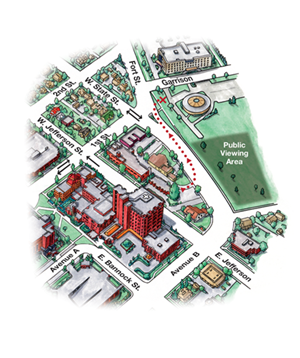
From there, the tree will inch its way to the edge of Fort St. That is likely to happen all day Friday. The tree will then be watered as it waits one day to cross the street and be inserted into its new pit at Fort Boise Park on Sunday.
To move the tree, the platform is towed by a back hoe as the giant tubes deflate, are moved to the rear then re-inflated. The tree will roll slowly 10 to 12 feet at a time over the course of about a minute and-a-half. At that rate, the tree movers say it will take eight hours for the tree to move 250 to 300 feet. When the Sequoia finally reaches its new location, the tree will be lowered in, the giant air bags deflated and removed, along with the steel pipes and root barrier. The area around the Sequoia will be back-filled with soil from the original location and irrigated.
St. Luke’s worked with the Boise City Forester to determine which location in Fort Boise Park was best-suited to ensure the health of the tree. It was determined the spot most similar to where it’s lived more than 100 years, is near the intersection of 1st, Fort and State Streets. Environmental Design will routinely check in and monitor the sequoia’s health over the next five years.
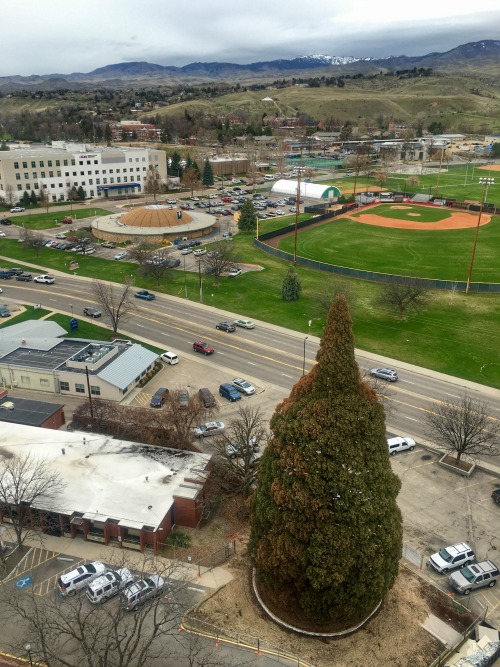
SEQUOIA ON SOCIAL MEDIA:
St. Luke’s will be posting updates from and about the sequoia. Please follow along and use the hashtag on Twitter and Instagram, #BoiseSequoia.
FOR THE PUBLIC:
In order to accommodate for the safety of all spectators, St. Luke’s is urging people who would like to watch the Sequoia activities to head to Fort Boise Park. The grass area along the back of the ball field is directly across Fort St. from the tree and the action. Parking is limited. Riding bikes or walking is encouraged. It’s also important to note the area around St. Luke’s is a no-fly zone. Personal drones will not be allowed during the tree’s move, and pose a serious risk to Air St. Luke’s and other medical transport helicopters.
A good time to see the tree will be all day Friday, June 23, as it is lifted out of its current hole. When it’s time for the tree to move across Fort St., the road will be temporarily closed. That’s anticipated to occur sometime late on Saturday, June 24th and overnight into Sunday, June 25th, depending on the progress of the work and ACHD approvals. Drivers in the area should allow for extra time and a detour. Those attending events Sunday at Fort Boise Park should also plan for additional crowds and limited parking. St. Luke’s will utilize all communication channels as far in advance as possible in order to alert the community to details of that closure.
The sidewalk on the north side of Fort St. between Reserve and Garrison will be closed starting Tuesday to allow crews to prepare the new location. The closure will remain in place through the end of the month. Pedestrians can still use the south sidewalk, and access will remain available to Elks Rehabilitation Hospital.
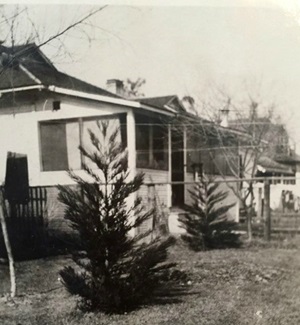
HISTORY OF THE SEQUOIA
As the tree's designated community steward, St. Luke's is committed to protecting and maintaining this treasure. The giant grew from a tiny cutting of a Sequoia presented as a gift to Doctors Fred and Alice Pittenger and planted next to their home around 1912.
The Sequoia was a gift from the conservationist Emile Grandjean, one of Idaho's first foresters. Mary Grandjean, the granddaughter of Emile, says originally there were two Sequoia trees near St. Luke’s. According to her family’s oral accounts, the seedlings came from John Muir in California and arrived in Idaho by express. Emile received four, with two given to the Pittenger Family. The other two were planted in the backyard of the Grandjean’s home on 11th St. in Boise. The photo to the left shows the size of those Sequoias a few years after they were planted.
In the 1980's the tree almost died. The culprit - the spirit of Christmas. St. Luke's started decorating the tree in 1984, and it became known as "Boise's Christmas Tree." For two weeks every year, people flocked to see thousands of lights strung around the limbs, decorations displayed below, and to sing Christmas carols.
Despite consulting with a local horticulture company to ensure the decorations would not harm the tree, the Sequoia began to decline. St. Luke's removed the asphalt around it, and several nearby junipers, but the tree's needles continued to brown. So, after the 1987 holiday season, St. Luke's canceled future celebrations in order to save the tree.
As the tree continued to deteriorate, St. Luke's brought in experts from California. At their recommendation, the top dead 11 feet were cut off, and all surrounding turf removed. A "leader" branch was bent up in hopes it would grow to replace the treetop.
Almost 30 years later, the giant Sequoia is hearty once again, and healthy enough for its monumental move.
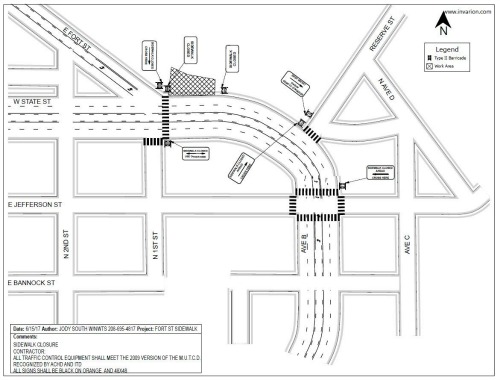
SEQUOIA STATISTICS:
Height = 98 feet tall
Circumference = 20 feet, 6 inches
Diameter at four feet up = 77 inches
Planted = Around 1912
About The Author

Anita Kisseé was the Treasure Valley public relations manager for St. Luke’s Health System.
